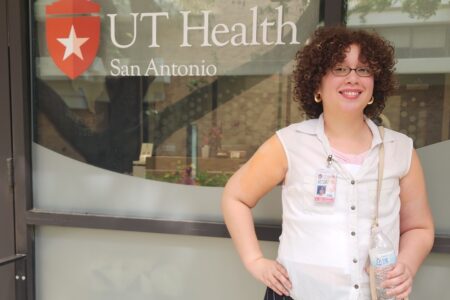
Share On Social!
Medicare can be a complex topic for anyone.
Getting health insurance coverage through Medicare has many moving parts, from knowing where to start, to searching through plans, to choosing the right plan for you.
Let’s dive into Medicare and a few helpful tips to consider when choosing your plan.
What is Medicare?
Medicare is the federal health insurance program for people who are 65 or older, regardless of income, medical history, or health status.
The program also covers certain younger people with disabilities and people with End-Stage Renal Disease (ESRD; permanent kidney failure requiring dialysis or a transplant).
“Medicare plays a key role in providing health and financial security to 60 million older people and younger people with disabilities,” according to KFF. “The program helps to pay for many medical care services, including hospitalizations, physician visits, prescription drugs, preventive services, skilled nursing facility and home health care, and hospice care.”
What Are the Different Parts of Medicare?
There are four parts of Medicare: A, B, C, and D.
Part A (Hospital Insurance) helps cover:
- inpatient care in hospitals
- skilled nursing facility care
- hospice care
- home health care
Part B (Medical Insurance) helps cover:
- services from doctors and other health care providers
- outpatient care
- home health care
- durable medical equipment (like wheelchairs, walkers, hospital beds, and other equipment)
- many preventive services (like screenings, shots or vaccines, and yearly “Wellness” visits)
Part C (Medicare Advantage Plans) helps provide:
- your Part A (Hospital Insurance) coverage
- your Part B (Medical Insurance) coverage
- usually includes Part D (prescription drug coverage)
- may have lower out-of-pocket costs than Original Medicare
- may offer some extra benefits that Original Medicare doesn’t cover — like vision, hearing, and dental services.
Part D (Drug Coverage) helps cover:
- the cost of prescription drugs (including many recommended shots or vaccines).
When and How Do You Sign Up for Medicare?
There are two options when it comes to signing up for Medicare coverage: Original Medicare or Medicare Advantage.
“If you are receiving benefits, the Social Security Administration will automatically sign you up at age 65 for parts A and B of Medicare,” according to AARP.
Original Medicare includes Part A and Part B.
You can join a separate Medicare drug plan to get Part D.
“People aren’t automatically enrolled in Medicare if they aren’t getting Social Security or aren’t eligible for Social Security retirement,” according to the Centers for Medicare & Medicaid Services. “They can sign up by completing an application for Part A (Hospital Insurance) (CMS 18-F-5) or by contacting the Social Security Administration (SSA).”
Original Medicare allows individuals to use any doctor or hospital that takes Medicare, anywhere in the U.S.
“To help pay your out-of-pocket costs in Original Medicare (like your 20% coinsurance), you can also buy supplemental coverage, like Medicare Supplement Insurance (Medigap), or have coverage from a former employer or union, or Medicaid,” according to medicare.gov.
Medicare Advantage Plan is a Medicare-approved plan from a private company that offers an alternative to Original Medicare for your health and drug coverage.
With a Medicare Advantage Plan, individuals will need to use doctors who are in the plan’s network, in most cases.
Plans may have lower out-of-pocket costs than Original Medicare and may offer some extra benefits that Original Medicare doesn’t cover — like vision, hearing, and dental services.
For those not automatically enrolled in Medicare, paying attention to enrollment dates and deadlines is important, according to Alyssa Gonzales, a licensed Medicare sales agent with The Gonzales Agency.
“Your enrollment period for Medicare is three months before your birthday, the month of your birthday, and three months after,” Gonzales said. “It’s a seven-month enrollment period that you have, now your Medicare will start the first day of your birthday month.”
You may have to pay a penalty if you miss your Initial Enrollment Period.
“If you are not ready to receive Social Security benefits at 65 because you are still working, you can apply online for Medicare only. Or you may be able to wait until you retire to sign up during a special enrollment period,” according to usa.gov.
Getting a Head Start
Choosing the Medicare plan that works best can be a daunting task. Many can find it challenging to even find a starting point.
A good starting point is to create an account on the social security website (ssa.gov), Gonzales said.

“You can see how many quarters you’ve already worked, what your full retirement age is. And people that are about to retire, they’ve never logged in before in their life,” Gonzales said.
Gonzales emphasized the importance of getting the right education and knowing what programs and benefits you and your family are eligible for.
Latinos often live in multi-generational households with children, parents, and grandparents.
“A lot of the times, it’s because of that multi-generational household. Some of these plans offer food cards, they offer utility assistance, they offer lower co-pays, so it’s less financial stress on the kids to support not only grandma or their parents, but also support their own family,” Gonzales said.
Gonzales also suggested visiting medicare.gov to take advantage of the important educational resources.
The medicare.gov website offers a multitude of free tools including:
- Medicare and You handbook, available in English, Spanish, and several other languages.
- A talk and live chat feature that assists with concerns and questions. Talk with someone in real time 24 hours a day, 7 days week (except some federal holidays.)
- Free publications and mail with more information can also be sent.
- Chat with someone by calling 1-800-MEDICARE (1-800-633-4227).
Common Mistakes When Choosing Plans
According to Gonzales, many Latinos often choose plans based on what others have, rather than taking advantage of educational resources.
“Pitfall No. 1 is just doing it because somebody else did it,” Gonzales said.
Another common mistake is lack of knowledge for applying and choosing the right plan.
“I feel like, the more we can educate, the more we help people and prepare people, and that’s what it is, most people aren’t prepared for this,” Gonzales said.
Websites like medicare.gov and ssa.gov provide helpful information steps to applying for a Medicare plan.
When considering what plan to choose, there are also certain factors to consider, like doctor preference and the medications that one takes.
“Not every network accepts every doctor. And then for the drugs, not every plan has the same formula,” Gonzales said.
You can find and compare providers, facilities, and services in your area with medicare.gov by entering your zip code.
Another important thing to consider is the “maximum out-of-pocket,” or MOOP.
“It’s highly confused with a deductible. A deductible is what you have to pay first, before the plan comes into effect and starts to play,” Gonzales said. “A max out of pocket is going to be the max you will ever pay out of your pocket.”
The Health of You and Your Community
Medicare is important as it plays a major role in providing health and financial security for over 60 million older people and people with disabilities.
The health of you and your familia is crucial, but what about the health of your community?
Look to the Salud America Health Equity Report Card to explore Latino-focused, local data on healthcare, education, transportation, and several other health-related topics
Find and compare data from your area to other counties and states across the country.
Share your county’s data with city leaders or social justice organizations to advocate for change in your community.
GET YOUR HEALTH EQUITY REPORT CARD!
Explore More:
Healthcare AccessBy The Numbers
142
Percent
Expected rise in Latino cancer cases in coming years



